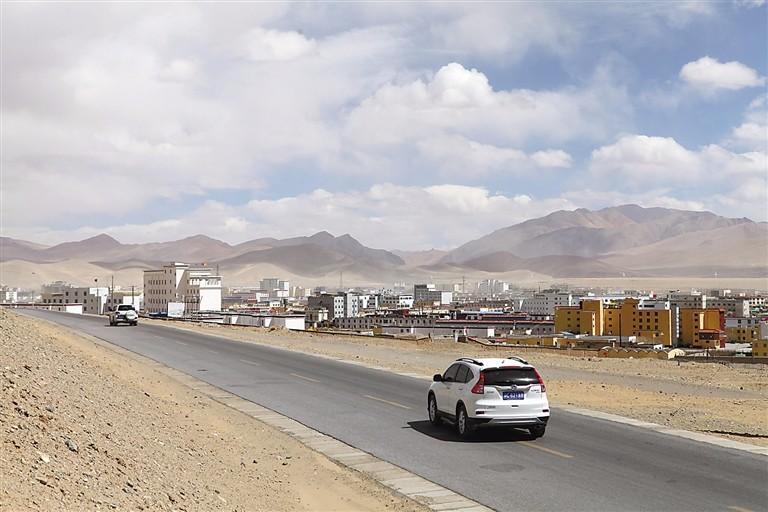By Zhu Shan Source:China Tibet News 2016年04月27日 16:08

Photo shows the Xinjiang-Tibet highway. [Photo/Wen Kai]
Xinjiang-Tibet Highway, linking Yecheng County of China's Xinjiang Uygur Autonomous Region and Burang County of China's Tibet Autonomous Region, is an important lifeline running at an average altitude of 4,500 meters. It was put into service on October of 1957, turning a new leaf in Tibet's transportation history. In 2010, the asphalt paving was applied to the Xinjiang-Tibet Highway, driving the economic growth along the road. This report takes Toma Village as an example to talk about how the Xinjiang-Tibet Highway spurs the economic development along the road.
Toma Village of Rutog County, Ngari Prefecture of southwest China's Tibet Autonomous Region, is the first village that Xinjiang-Tibet Highway goes through when it enters China's Tibet. In recent years, Rutog County focuses on building demonstration towns and tourist transport points, promoting the development of local economy.
Before the rebuilding of Xinjiang-Tibet Highway, Ngawang Gyatso, a villager in Toma Village, made a living as a herdsman. Since 2013, the Xinjiang-Tibet Highway paved with asphalt was reopened to the public. The number of tourists and passers-by was growing rapidly. At that time, Ngawang Gyatso opened a small shop that was also a tea house on the side of the highway. No more than two years, he earned 130,000 yuan RMB ( 20,020 U.S. dollars). Besides, He also bought a loader for his son in order to work at the building sites. Every year, his son can earn about 100,000 yuan RMB (15,400 U.S. dollars).
Thanks to the convenience brought by Xinjiang-Tibet Highway and the construction of demonstration towns, currently, there are six shops, five inns and one Sand & Stone factory in Toma Village, among which the Sand & Stone factory is Toma Village's first collective economic organization. Sand & Stone factory can output 1.55 million yuan RMB (238,700 U.S. dollars) for only half a year.
What's more, Toma Village provides training classes for local farmers and herdsmen. Until now, more than 30 villagers have been trained and taken part in learning and communication activities.
Xinjiang-Tibet Highway not only bridges the gap between Tibet and China's other provinces but also promotes the development of economy and society along the expressway.